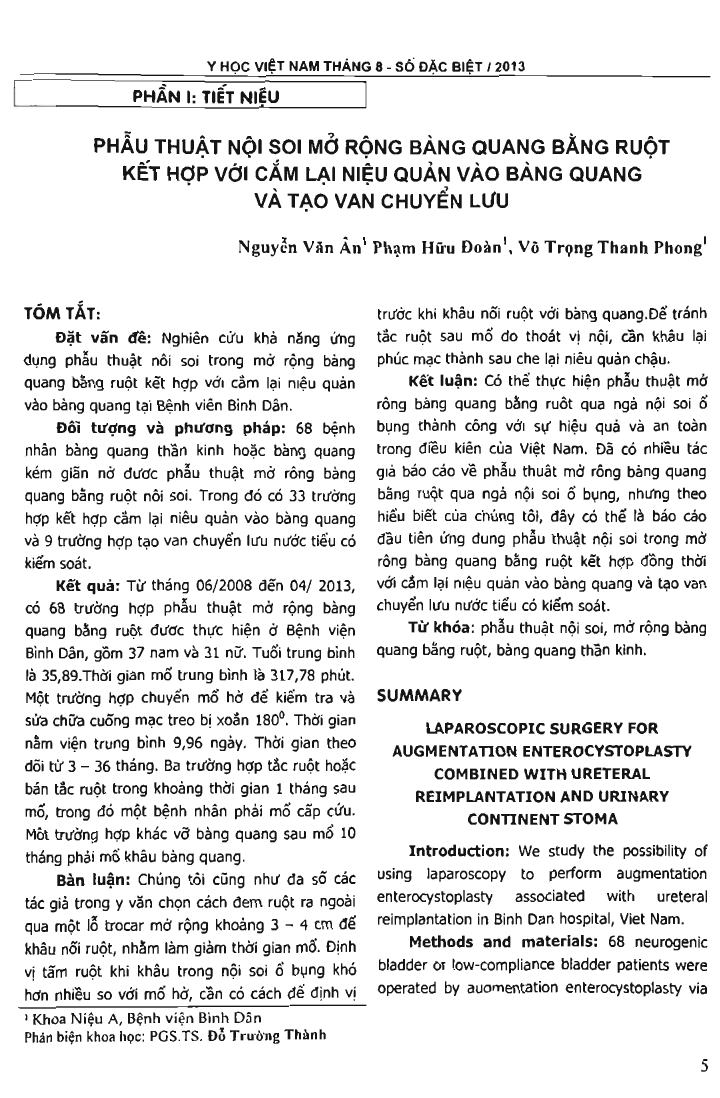
Introduction: The authors study the possibility of using laparoscopy to perform augmentation enterocystoplasty associated with ureteral reimplantation in Binh Dan hospital, Vietnam. Methods and materials: 68 neurogenic bladder or low-compliance bladder patients were operated by auamentation enterocystoplasty via laparoscopy. Among them, 33 were combined with reimplanting ureters to augmented bladders, and 9 were associated with performing continent stomas. Results: From July 2008 to April 2013, 68 cases of augmentation enterocystoplasty by laparoscopy were performed at Sinh Dan hospital, composed of 37 men and 31 women. Mean age ~ 35,89. Mean operation time was ~ 371,78 minutes. One case had to convert caused by being twisted of pedicle of intestinal portion used for plasty. Mean hospital stay was ~ 9,96 days. Times of following-up from 3 - 36 months. Three cases was suffered from intestinal obstruction 1 month post-op and one had to reoperate. Another case was suffered from augmented bladder perforation caused having no interrupted catheterization 10 months after operation and had to reoperate. Discussion: The authors have performed handassissted laparoscopy, taking small intestine out of the abdominal cavity to make intestinal plasty, to save the operative time. It is difficult to determine the position of intestinal sheet, therefore the authors have some tips and tricks while intestino-vesical suturing. To prevent intestinal obstruction post-op caused by internal hernia, it is necessary to cover the portion of pelvic ureters by closing parietal peritoneum. Conclusion: Augmentation enterocystoplasty via laparoscopic surgery can be performed successfully with efficacy and safety in the condition of Vietnam. Many authors have reported laparoscopic augmentation cystoplasty, but to the knowledge, this may be the first report which performs laparoscopic augmentation enterocystoplasty, ureteral reimplantation and continent stoma simultaneously.
- Đăng nhập để gửi ý kiến
